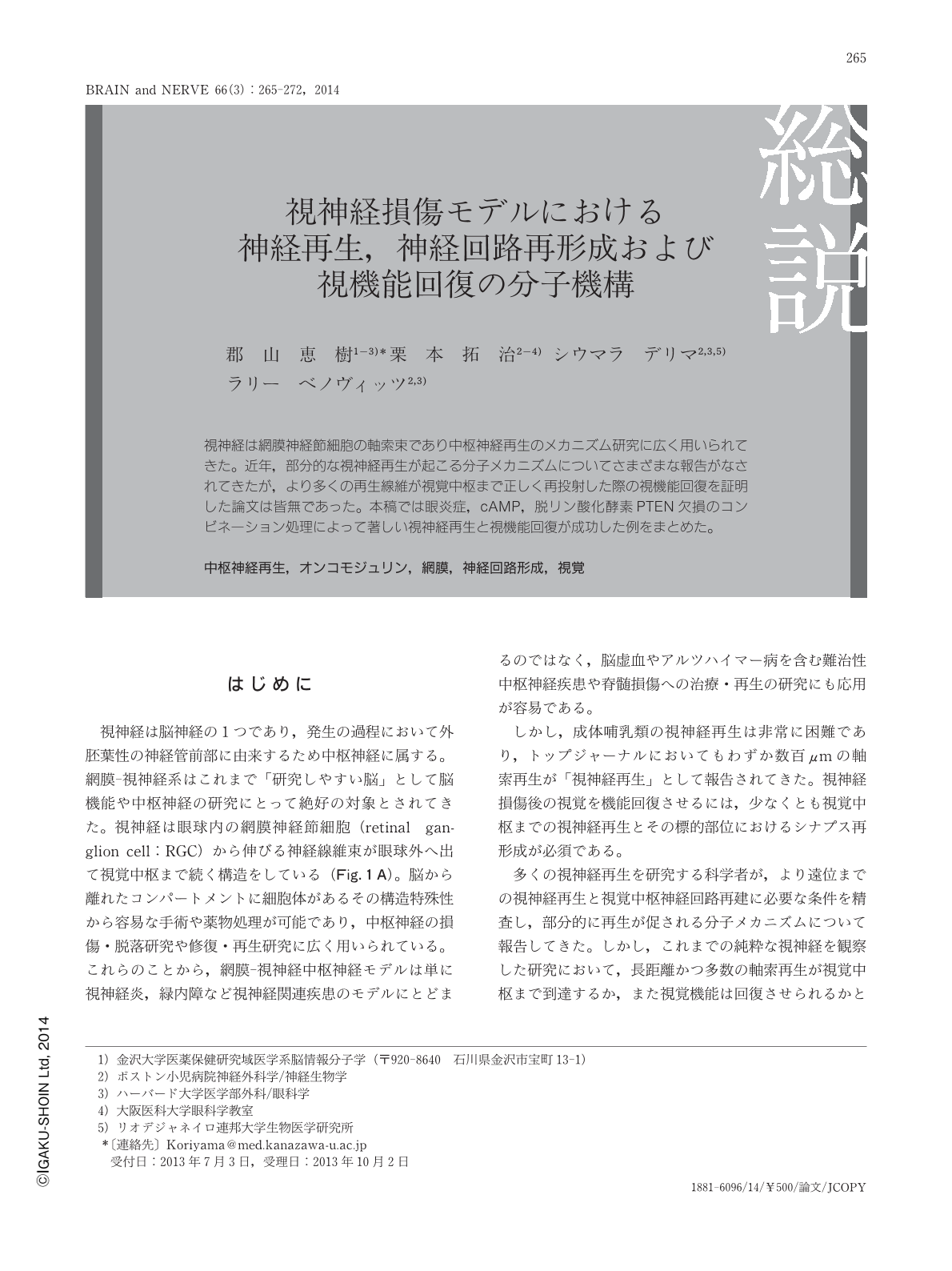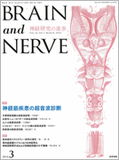Japanese
English
- 有料閲覧
- Abstract 文献概要
- 1ページ目 Look Inside
- 参考文献 Reference
視神経は網膜神経節細胞の軸索束であり中枢神経再生のメカニズム研究に広く用いられてきた。近年,部分的な視神経再生が起こる分子メカニズムについてさまざまな報告がなされてきたが,より多くの再生線維が視覚中枢まで正しく再投射した際の視機能回復を証明した論文は皆無であった。本稿では眼炎症,cAMP,脱リン酸化酵素PTEN欠損のコンビネーション処理によって著しい視神経再生と視機能回復が成功した例をまとめた。
Abstract
The optic nerve has been widely studied in search for insights into mechanisms that suppress or promote axon regeneration after injury. Like other CNS neurons, adult retinal ganglion cells (RGCs) normally fail to regenerate their axons after optic nerve injury. Recent studies have identified molecular pathways able to allow partial regeneration of damaged RGCs axons in mature rodents; however, it is still unknown, whether regrowing optic axons can re-enter the brain in large numbers, innervate the correct target areas, and thus restore vision. We investigated these questions by using three manipulations that synergistically increase regeneration far above the level induced by any of the three used alone. Oncomodulin is a calcium-binding protein secreted by activated macrophages and neutrophils and stimulates RGCs to regenerate axons. Its ability to bind to RGCs and activate a downstream response is enhanced by elevating intracellular cAMP. Studies were carried out in mice with a conditional deletion of the gene encoding PTEN, a phosphatase and tensin homolog that suppresses signaling through the Akt/mTOR/S6K pathway. Our results showed that intraocular inflammation, deletion of the PTEN gene and elevation of intracellular cAMP exert synergistic effects that enable RGCs to regenerate the full length of axons, form synapses, and restore simple visual functions. These results demonstrate the feasibility of reconstructing central circuitry for vision after optic nerve damage in mature mammals. (Receieved July 3, 2013; Accepted October 2, 2013; Published March 1, 2014)

Copyright © 2014, Igaku-Shoin Ltd. All rights reserved.


